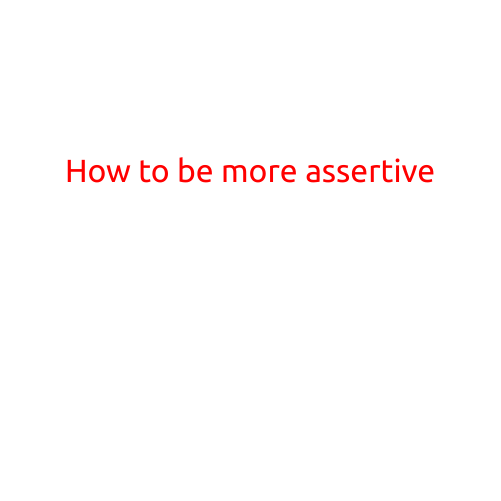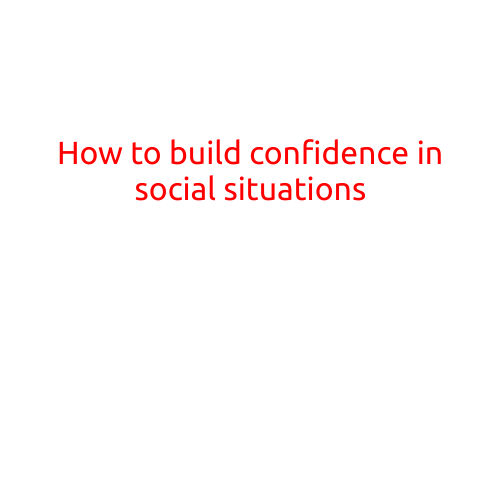
How to be More Assertive: Tips and Strategies for Effective Communication
Assertiveness is an essential skill for building strong relationships, achieving personal and professional goals, and maintaining healthy boundaries. However, many people struggle to find the right balance between being respectful and being firm. Assertive communication can help you express your needs and opinions without crossing the line into aggression or passivity.
In this article, we’ll explore the benefits of assertiveness and provide practical tips and strategies for becoming more assertive in your daily life.
Why is Assertiveness Important?
Assertiveness is important because it allows you to:
- Express your needs and opinions without fear of rejection or criticism
- Set and maintain healthy boundaries
- Resolve conflicts and disagreements in a constructive manner
- Build stronger, more meaningful relationships
- Increase your confidence and self-esteem
Common Barriers to Assertiveness
Many people struggle to be more assertive due to:
- Fear of rejection or criticism
- Lack of self-confidence
- Unclear communication
- Fear of conflict or confrontation
- Difficulty saying “no”
Tips for Becoming More Assertive
- Know Your Worth: Understanding your strengths, values, and goals can help you communicate your needs and opinions with confidence.
- Practice Self-Care: Taking care of your physical and emotional well-being can boost your self-esteem and confidence.
- Use “I” Statements: Instead of blaming others, use “I” statements to express your thoughts and feelings. For example, “I feel overwhelmed when…” instead of “You always…”
- Set Clear Boundaries: Establishing clear boundaries can help you maintain a sense of control and assert yourself in a respectful manner.
- Listen Actively: Pay attention to others and show that you’re engaged in the conversation. This can help you avoid misunderstandings and build stronger relationships.
- Be Aware of Nonverbal Cues: Your body language, tone of voice, and facial expressions can convey confidence and assertiveness. Practice maintaining good posture, making eye contact, and using a firm but respectful tone.
- Ask for What You Want: Don’t assume others will read your mind. Clearly state what you need or want, and be open to compromise.
- Learn to Say “No”: Practice saying “no” without guilt or apology. Remember that “no” is a complete sentence!
- Use “Assertive Language”: Use a firm but respectful tone and language to express yourself. For example, “I understand your point, but I respectfully disagree” instead of “You’re wrong!”
- Seek Feedback: Practice receiving feedback and constructive criticism, and use it as an opportunity to learn and grow.
Putting Assertiveness into Practice
- Role-Playing: Practice assertive communication with a friend or family member. Take turns role-playing different scenarios, such as asking for a raise or saying “no” to a request.
- Journaling: Write down your thoughts and feelings, and practice expressing yourself assertively in your writing.
- Join a Support Group: Connect with others who are working on building their assertiveness skills. Sharing experiences and advice can be a powerful motivator.
- Take Small Steps: Start small by asserting yourself in low-stakes situations, such as asking for help or making a request at work.
Conclusion
Assertiveness is a valuable skill that can improve your relationships, communication, and overall well-being. By practicing the tips and strategies outlined in this article, you can build your confidence and develop a more assertive communication style. Remember that assertiveness is not about being aggressive or demanding, but about being clear and respectful in expressing your needs and opinions. With time and practice, you can become a more assertive and effective communicator.





